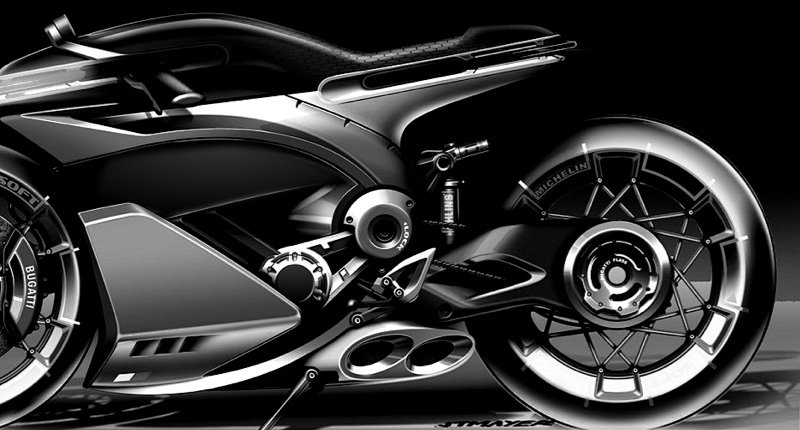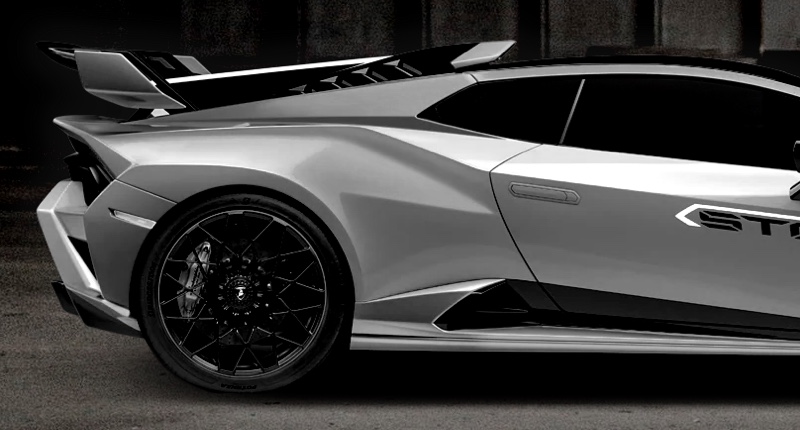How to Choose High-Performance Carbon Fiber Materials: Supreem Carbon’s Expert Guide
- Introduction to Carbon Fiber: A Material That Redefines Possibilities
- Why Carbon Fiber? Understanding Its Superior Properties
- Unmatched Strength-to-Weight Ratio
- Exceptional Durability and Corrosion Resistance
- Flexibility in Design
- Thermal Stability
- Aesthetic Appeal
- Key Factors to Consider When Choosing Carbon Fiber Materials
- 1. Type of Carbon Fiber
- 2. Resin Systems
- 3. Weave Patterns
- 4. Manufacturing Process
- 5. Quality and Consistency
- 6. Sustainability Considerations
- Applications of High-Performance Carbon Fiber
- Aerospace
- Automotive
- Sports and Recreation
- Renewable Energy
- Medical Devices
- How to Evaluate a Carbon Fiber Supplier
- 1. Technical Expertise
- 2. Customization Capabilities
- 3. Quality Assurance
- 4. Scalability
- 5. Customer Support
- Common Mistakes to Avoid When Choosing Carbon Fiber
- 1. Prioritizing Cost Over Quality
- 2. Ignoring Application Requirements
- 3. Overlooking Manufacturing Constraints
- 4. Neglecting Testing
- Why Choose Supreem Carbon?
- Conclusion: Making the Right Choice for Your Project
Introduction to Carbon Fiber: A Material That Redefines Possibilities
Carbon fiber has transformed industries, from aerospace to automotive, sports equipment to renewable energy. Its unique combination of strength, lightness, and versatility makes it a go-to material for engineers, designers, and innovators. But not all carbon fiber is created equal. Choosing the right high-performance carbon fiber material can make or break your project. At Supreem Carbon, we’ve spent years mastering the science and art of carbon fiber production, and in this guide, we’ll walk you through everything you need to know to make an informed decision.
This article is designed to help you understand the qualities that make carbon fiber exceptional, the factors to consider when selecting materials, and how to ensure you’re getting the best performance for your needs. Whether you’re an engineer designing a cutting-edge aircraft or a hobbyist crafting a custom bicycle, this guide will empower you to choose wisely.
Why Carbon Fiber? Understanding Its Superior Properties
Carbon fiber is often described as a “miracle material,” and for good reason. Its properties set it apart from traditional materials like steel, aluminum, or plastic. Let’s explore what makes carbon fiber so special.
Unmatched Strength-to-Weight Ratio
One of the most celebrated qualities of carbon fiber is its incredible strength-to-weight ratio. Pound for pound, carbon fiber is stronger than steel yet significantly lighter. This makes it ideal for applications where weight savings are critical, such as in aerospace, where every kilogram reduced translates to fuel efficiency, or in sports, where lighter equipment enhances performance.
For example, a carbon fiber component can be up to five times stronger than steel while weighing just a fraction as much. This allows designers to create structures that are both robust and agile, a combination that’s hard to achieve with other materials.
Exceptional Durability and Corrosion Resistance
Unlike metals, carbon fiber doesn’t rust or corrode, even when exposed to harsh environments like saltwater or extreme temperatures. This durability makes it a favorite in marine applications, such as yacht hulls, and in industries where longevity is paramount, like wind turbine manufacturing.
At Supreem Carbon, we’ve seen firsthand how carbon fiber’s resistance to environmental wear extends the lifespan of products, reducing maintenance costs and ensuring reliability over time.
Flexibility in Design
Carbon fiber’s versatility allows it to be molded into complex shapes that would be difficult or impossible with metals. This flexibility is a game-changer for industries like automotive design, where sleek, aerodynamic forms are both functional and aesthetically pleasing. From curved car body panels to intricate medical device components, carbon fiber offers unmatched design freedom.
Thermal Stability
Carbon fiber maintains its structural integrity across a wide range of temperatures, making it suitable for applications in extreme conditions, such as spacecraft or high-performance engines. Its low thermal expansion ensures that components remain stable, even under intense heat or cold.
Aesthetic Appeal
Beyond its functional benefits, carbon fiber has a distinctive, high-tech look that’s instantly recognizable. The woven pattern of carbon fiber composites adds a premium, futuristic aesthetic to products, whether it’s a luxury car interior or a high-end watch case.
Key Factors to Consider When Choosing Carbon Fiber Materials
Selecting the right carbon fiber material involves more than just picking a product off the shelf. Here are the critical factors to consider to ensure you’re getting high-performance materials that meet your needs.
1. Type of Carbon Fiber
Not all carbon fibers are the same. The type of fiber you choose depends on your project’s requirements. Here’s a breakdown of the main types:
-
Standard Modulus Carbon Fiber: Offers a balance of strength, stiffness, and cost. It’s widely used in applications like automotive parts and consumer goods where high performance is needed without extreme demands.
-
Intermediate Modulus Carbon Fiber: Provides higher stiffness and strength, making it suitable for more demanding applications, such as aerospace components or high-performance sports equipment.
-
High Modulus Carbon Fiber: Known for its exceptional stiffness, this type is used in precision applications like satellite structures or Formula 1 racing cars, where weight and rigidity are critical.
-
Ultra-High Modulus Carbon Fiber: The pinnacle of carbon fiber performance, offering maximum stiffness but at a higher cost. It’s reserved for specialized applications like advanced aerospace or military projects.
At Supreem Carbon, we offer a range of carbon fiber types tailored to your specific needs, ensuring you get the right material for your project without overspending.
2. Resin Systems
Carbon fiber is typically combined with a resin matrix to form a composite material. The resin plays a critical role in determining the final properties of the composite. Common resin systems include:
-
Epoxy Resins: The most common choice for high-performance carbon fiber composites, epoxies offer excellent strength, durability, and adhesion to carbon fibers. They’re ideal for aerospace, automotive, and sporting goods.
-
Polyester Resins: More cost-effective but less durable than epoxies, polyester resins are often used in less demanding applications, such as decorative panels or non-structural components.
-
Vinyl Ester Resins: A middle ground between epoxy and polyester, offering good durability and corrosion resistance at a lower cost than epoxy.
-
Thermoplastic Resins: Increasingly popular for their recyclability and toughness, thermoplastics are used in applications requiring impact resistance or the ability to reshape the material.
When choosing a resin, consider factors like curing time, temperature resistance, and environmental exposure. Our team at Supreem Carbon works closely with clients to select the optimal resin system for their projects.
3. Weave Patterns
The weave pattern of carbon fiber affects both its performance and appearance. Common patterns include:
-
Plain Weave: A simple, balanced weave that offers good stability and is easy to work with. It’s commonly used in applications where aesthetics and moderate strength are important.
-
Twill Weave: Known for its diagonal pattern, twill weave provides better drape (ability to conform to complex shapes) and is popular in automotive and aerospace applications.
-
Satin Weave: Offers a smoother surface and higher flexibility, making it ideal for intricate designs or decorative applications.
-
Unidirectional Fiber: Not a weave but a single-direction fiber alignment, unidirectional carbon fiber maximizes strength along one axis, making it ideal for structural components like beams or frames.
The choice of weave depends on your project’s functional and aesthetic goals. Supreem Carbon’s experts can guide you in selecting the best weave for your application.
4. Manufacturing Process
The way carbon fiber is manufactured impacts its performance and cost. Common manufacturing processes include:
-
Prepreg Layup: Pre-impregnated carbon fiber sheets are layered and cured in an autoclave for maximum strength and precision. This is ideal for high-performance applications like aerospace.
-
Resin Transfer Molding (RTM): Resin is injected into a mold containing dry carbon fiber, offering good strength and scalability for automotive parts.
-
Filament Winding: Used for cylindrical components like pipes or pressure vessels, this process ensures consistent fiber alignment and strength.
-
Pultrusion: A continuous process for producing long, uniform profiles like beams or rods, ideal for structural applications.
Each process has trade-offs in terms of cost, production speed, and performance. Supreem Carbon specializes in tailoring manufacturing processes to meet your project’s specific requirements.
5. Quality and Consistency
High-performance carbon fiber demands rigorous quality control. Variations in fiber alignment, resin distribution, or curing conditions can compromise performance. When choosing a supplier, look for:
-
Certifications: Ensure the supplier meets industry standards, such as ISO 9001 or AS9100 for aerospace applications.
-
Testing: Ask about testing protocols, such as tensile strength, modulus, or fatigue testing, to verify material performance.
-
Traceability: High-quality suppliers provide traceability for their materials, ensuring consistency from raw fiber to finished product.
At Supreem Carbon, we pride ourselves on our stringent quality control processes, ensuring every batch of carbon fiber meets the highest standards.
6. Sustainability Considerations
As industries move toward sustainability, the environmental impact of carbon fiber production is increasingly important. Look for suppliers who prioritize eco-friendly practices, such as:
-
Recyclable Resins: Thermoplastic resins can be melted and reused, reducing waste.
-
Energy-Efficient Processes: Modern manufacturing techniques that minimize energy consumption.
-
Recycled Carbon Fiber: Some suppliers offer recycled carbon fiber, which maintains high performance while reducing environmental impact.
Supreem Carbon is committed to sustainable practices, offering options like recyclable resins and energy-efficient production to align with your environmental goals.
Applications of High-Performance Carbon Fiber
To understand how to choose the right carbon fiber, it’s helpful to see how it’s used across industries. Here are some key applications and the material properties that make them possible.
Aerospace
In aerospace, weight reduction is critical for fuel efficiency and performance. Carbon fiber’s strength-to-weight ratio and thermal stability make it ideal for components like aircraft wings, fuselage panels, and satellite structures. High-modulus carbon fiber and epoxy resins are often used to meet the stringent demands of this industry.
Automotive
From luxury sports cars to electric vehicles, carbon fiber is revolutionizing automotive design. It’s used in body panels, chassis components, and interiors to reduce weight and improve fuel efficiency or battery range. Twill weaves and resin transfer molding are popular choices for their balance of aesthetics and performance.
Learn more about cutting-edge innovations and real-world applications in our detailed guide: Latest Developments in the Application of Carbon Fiber Materials in the Automotive and Motorcycle Fields.
Sports and Recreation
Carbon fiber is a staple in high-performance sports equipment, from tennis rackets to bicycle frames. Its lightness and stiffness enhance athlete performance, while its durability ensures equipment withstands intense use. Plain or twill weaves with epoxy resins are common for their aesthetic appeal and strength.
Renewable Energy
Wind turbine blades and solar panel frames benefit from carbon fiber’s durability and corrosion resistance. Unidirectional fibers and filament winding processes are often used to create long, strong components that withstand environmental stresses.
Medical Devices
Carbon fiber’s biocompatibility and ability to be molded into complex shapes make it ideal for medical applications like prosthetics, imaging equipment, and surgical tools. Satin weaves and epoxy resins provide the precision and smooth surfaces needed for these applications.
How to Evaluate a Carbon Fiber Supplier
Choosing the right supplier is as important as selecting the right material. Here’s what to look for in a carbon fiber supplier:
1. Technical Expertise
A knowledgeable supplier can guide you through material selection, manufacturing processes, and customization options. Look for a team with deep industry experience and a track record of successful projects.
2. Customization Capabilities
Every project is unique. A good supplier should offer tailored solutions, from custom weave patterns to specialized resin systems. At Supreem Carbon, we work closely with clients to develop bespoke materials that meet their exact specifications.
3. Quality Assurance
Ask about the supplier’s quality control processes, certifications, and testing capabilities. Consistent quality is critical for high-performance applications.
4. Scalability
Whether you need a single prototype or large-scale production, your supplier should have the capacity to meet your needs. Supreem Carbon offers flexible production options to support projects of all sizes.
5. Customer Support
A reliable supplier provides ongoing support, from material selection to post-production troubleshooting. Look for a partner who prioritizes communication and collaboration.
If you’re interested in discovering why Supreem Carbon stands out among Chinese carbon fiber brands,check out Chinese Carbon Fiber Manufacturer Brands: Supreem Carbon in the Spotlight.
Common Mistakes to Avoid When Choosing Carbon Fiber
Even experienced professionals can make mistakes when selecting carbon fiber materials. Here are some pitfalls to watch out for:
1. Prioritizing Cost Over Quality
While budget is important, choosing the cheapest carbon fiber can lead to performance issues or premature failure. Invest in high-quality materials to ensure long-term reliability.
2. Ignoring Application Requirements
Not all carbon fiber is suited for every application. For example, using standard modulus fiber in an aerospace project may compromise performance. Always match the material to the specific demands of your project.
3. Overlooking Manufacturing Constraints
The best carbon fiber in the world won’t perform if it’s not manufactured correctly. Ensure your supplier’s processes align with your project’s needs, whether it’s precision layup or high-volume production.
4. Neglecting Testing
Without proper testing, you can’t verify a material’s performance. Work with a supplier who provides comprehensive testing data to ensure your materials meet expectations.
Why Choose Supreem Carbon?
At Supreem Carbon, we’re more than just a supplier—we’re a partner in your success. Our commitment to quality, innovation, and sustainability sets us apart in the carbon fiber industry. Here’s why clients trust us:
-
Expertise: Our team of engineers and material scientists brings decades of experience to every project.
-
Customization: We offer tailored solutions, from custom fiber types to specialized manufacturing processes.
-
Quality: Our rigorous quality control ensures every product meets the highest standards.
-
Sustainability: We prioritize eco-friendly practices to help you meet your environmental goals.
Whether you’re building the next generation of aircraft or crafting a one-of-a-kind product, Supreem Carbon is here to help you choose the perfect carbon fiber material.
Conclusion: Making the Right Choice for Your Project
Choosing high-performance carbon fiber materials requires a deep understanding of your project’s needs and the materials available. By considering factors like fiber type, resin system, weave pattern, and manufacturing process, you can select a material that delivers the strength, durability, and aesthetics your project demands. Partnering with a trusted supplier like Supreem Carbon ensures you get the expertise, quality, and support you need to succeed.
Ready to take your project to the next level? Contact Supreem Carbon today to explore our range of high-performance carbon fiber materials and start building something extraordinary.

2020+ Toyota Supra A90 Carbon Fiber Engine Cover released!

Application of 3D Printing in Carbon Fiber Accessories

What are the Applications of Carbon Fiber in BMW Cars

Le fabricant leader de fibre de carbone personnalisée en Europe

Supreem Carbon new arrivals released!

Carbon Fiber Helmet produced by Supreem Carbon.
For Products
Are you parts have UV protected?
Absolutely! We use multiple layers of premium quality automotive clear (or matt) coats on our products, which ensure that they will remain super pretty for years to come.
Supreem Carbon parts produce by 100% carbon?
Yes,all products are made from full carbon with dry carbon.
For Facotry
How many monthly production capacity of the factory?
The average monthly production capacity reach 3000 pieces. With the equipment upgrade, it will be increased over 4000 pieces per month.
How many employees of Supreem carbon?
We have over 50 employees, including over 40 skilled workers, 3 R&D designers, and 5 QC professionals and so on.
For Order Delivery
What is the shipping time for the different ways?
Express delivery 5-7 days.
20-25 days by sea.
15 days by air.

Ducati Desert X Carbon Fiber Sprocket Cover

Ducati Panigale 1199 1299 899 959 V2 Carbon Fiber Suspension Cover

Yamaha R1 R1M Carbon Fiber Undertail

Ducati Panigale V4 Carbon Fiber Belly Pan Custom
Let’s Bring Your Carbon Fiber Ideas to Life
Have a question or inquiry about our carbon fiber composite products? Leave us a message here, and our team will get back to you promptly.
Whether you're interested in custom orders, technical specifications, or partnership opportunities, we're here to assist you.
Please fill out the fields above with your name, email address, and message.
© 2024 Supreem Carbon All Rights Reserved.





Facebook
Pinterest
LinkedIn
Instagram